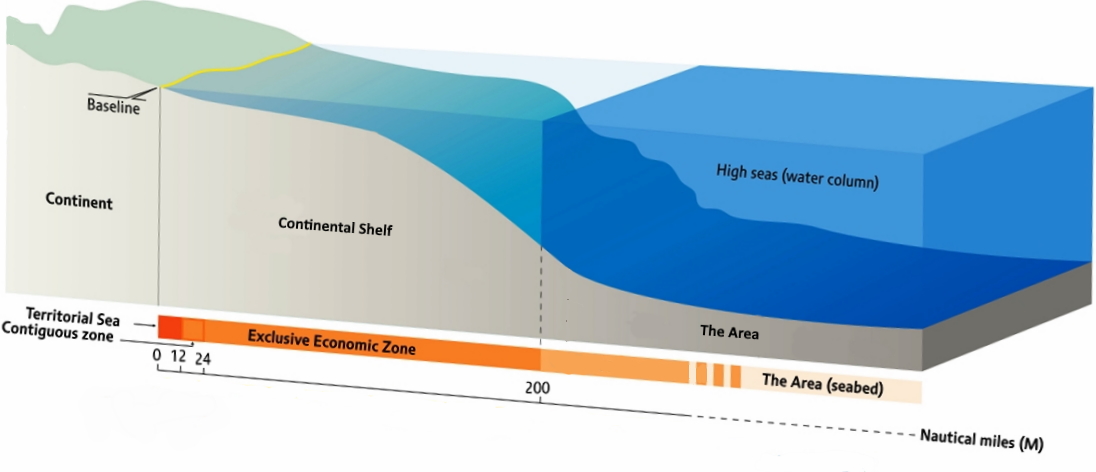The Area. What we are talking about? Or what is that deep seabed mining that we are discussing here?
The notion deep seabed mining implies that it is mining that occurs at the deep seabed. Deep sea is considered all sea areas below 200m which is basically 95% of the sea volume.1 Consequently, all mining below 200m is deep seabed mining.
Nevertheless, this logic is not always correct for deep seabed mining as it is understood in Deep seabed Blog. The focus of this Blog is to analyse the international deep seabed mining regime and its legal framework. Consequently, in some instances, seabed mining conducted below the 200m limit will not be deep seabed mining in the context of Deep seabed Blog. The existing international legal framework is based not on depth but on the location criterion. Thus, even if seabed mining is conducted below 200m or vice versa, it can be conducted in a location where the international deep seabed mining legal regime does not apply.
The location where the international legal regime for deep seabed mining rules is called the Area. International treaties describe the Area as the seabed and ocean floor and subsoil thereof, beyond the limits of national jurisdiction as described (UNCLOS Art. 1(1)).2 It means that the seabed that is not under certain state national jurisdiction is part of the Area and it is controlled under the international legal framework. There is no exact limit of the Area, just because it is complicated to measure, and it is completely impractical. However, the Area starts where national jurisdiction ends or at the end of the continental shelf approximately 200nm from the shore (figure 1).3

Figure 1.
It is considered that the Area covers around 54% of the world's seas.4 It is just a little bit more than a half but even after a glimpse to a globe or to the map below and that is sure hell a lot (figure 2). The dark blue constitutes the Area.
So that is what we are dealing here with, with an enormous territory and its resource management, it could be used for us to prosper or bring us closer to our demise.

Figure 2. By B1mbo [CC BY-SA 3.0 cl} via Wikimedia Commons
P.S. Now I feel obligated to explain why I spent so much precious digital ink to stress some small differences that probably are not that important anyway.
I try to avoid confusing readers. In my experience, it is common that you become interested in any topic or search for information about issues that concern you. I imagine that there will be a part of readers that will start to read this Blog because some seabed mining will start next to their favourite beach. Nevertheless, there will not be much use of reading these posts as deep seabed mining by the beach most likely will be in the national domain and unfortunately, I will not be able to help you at all. So, stop reading.
1https://portals.iucn.org/library/sites/library/files/documents/2018-029-En.pdf
2United Nations Convention on the Law of the Sea 1982.
3Please see UNCLOS Part VI Continental Shelf for more details.
4https://www.isa.org.jm/about-isa
